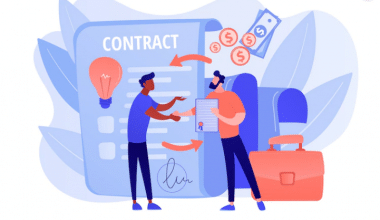It is impossible to debate the merits of a blanket and bridge loan in real estate. Bridge loans are short-term and only cover one property until permanent financing can be obtained. A blanket loan, however, allows you to combine several mortgage loans into one. This saves the client time because they don’t have to manage all of their properties differently. If you’re looking to buy several properties at once, meeting the blanket loan requirements will help you save time, reduce costs, and increase buyer efficiency. You’ll also need to look around for blanket loan lenders and mortgage brokers who work with borrowers on this type of loan.
What Is a Blanket Loan in Real Estate?
A blanket loan covers more than one property. The group of properties is used as collateral for the loan. Real estate developers and larger investors frequently purchase multiple properties at once, so a blanket mortgage allows them to consolidate those transactions into a single loan. When a borrower has a blanket mortgage, he or she can sell one property and not have to pay off the others.
It’s possible to use blanket mortgages for commercial as well as residential transactions, including multifamily housing. Companies and developers who buy and resell houses also make use of them.
While blanket mortgages are more commonly used in the commercial context, some residential landlords do use them to finance a portfolio of rental properties. You can refinance a blanket mortgage, which is also known as a blanket loan, like any other mortgage.
How Does Blanket Loan Work?
A blanket loan is one loan that covers more than one property. The group of properties is used as security for the loan. Large investors and real estate developers often buy more than one property at the same time. A blanket mortgage lets them make all of these purchases with just one loan.
What Does a Blanket Loan Cover?
A blanket loan covers a variety of real estate assets, such as developed or undeveloped land, as well as commercial or residential property. The assets, which include land and/or buildings, are used as collateral to secure the loan.
- Using a blanket loan, a real estate investor could buy properties in multiple locations and combine them into one.
- In a single transaction, home flippers can buy several properties to work on.
- Developers could finance a large parcel of land that they intend to subdivide and sell as smaller, separate parcels.
- An organization might purchase multiple properties.
If the borrower has a blanket mortgage, he or she can sell any of the assets and remove them from the loan’s liability at any time. At the same time, the borrower has the option of refinancing or paying off the entire loan when the time comes.
What Is the Purpose of Blanket Loans?
The most common use of blanket mortgage loans is to purchase a large number of commercial or residential properties all at once or to purchase land for future development. For example, you can use a blanket loan to purchase several pieces of real estate from different sellers, then sell the individual lots to new homeowners. House flippers also use these mortgage loans to purchase multiple properties at the same time.
However, you cannot use a blanket loan to buy primary residences, vacation homes, or your first investment properties. To be eligible, you must have a substantial real estate portfolio.
Who Should Receive Blanket Loan?
A blanket mortgage or loan is most beneficial to the following groups.
#1. House Flippers
When it comes to property financing, those in the fix and flip business frequently face a variety of challenges. A blanket loan allows you to purchase, improve, and sell your home all at once. Because of the simple procedure, house flippers no longer have to narrow their attention to a single property.
#2. Investors in Real estate
Home values are rising across the country. If you have a well-established portfolio of investment properties, they can be your most powerful wealth-building tool. A blanket loan enables you to purchase additional properties as you begin to sell.
#3. Landlords
Landlords frequently buy a few properties and finance them with a blanket mortgage. The goal is to attract more tenants and expand one’s rental property portfolio.
#4. Builders
A blanket loan could be a solution if you recently purchased land and are unsure how to begin the development phase.
Are Blanket Loans Good?
One of the best ways to finance a portfolio of homes is with a blanket loan. To consolidate the financing for many properties into one simple loan, a blanket loan can be taken out. It’s also a great way to expand your real estate investment without having to seek for more funding each time.
The Benefits and Drawbacks of a Blanket Loan
Make sure you do some research before committing to a large mortgage. This loan is not appropriate for every borrower, and the last thing you want is to be saddled with a mortgage you can’t afford. Consider these benefits and drawbacks before deciding on a blanket loan.
Advantages of Blanket Loans
When blanket mortgages or blanket loans are appropriate, they can provide several benefits LIKE:
- A blanket mortgage consolidates all of your properties into a single mortgage, as opposed to multiple mortgages. This can make managing your portfolio and mortgage payments easier.
- You may be able to avoid multiple loan upfront fees if you purchase multiple properties with a single loan.
- Because it is a single loan, you will only have one monthly payment and one interest rate. You might be hit with a slew of interest fees if you take out several loans to cover your various properties.
Disadvantages Of Blanket Loans
No matter how beneficial these loans may be, they are not without risk. Consider the following before obtaining a blanket mortgage:
- As collateral for the loan, you may lose some or all of your properties to foreclosure if you fail to keep up with payments.
- Not all lenders provide blanket loans, and those that do may have stringent requirements, making it difficult to obtain this type of loan.
- You can’t use a blanket loan to buy property in more than one state because the requirements for blanket loans vary from state to state.
- While there are no multiple origination fees, the closing costs on a blanket mortgage are significantly higher than those on a traditional mortgage.
Blanket Loan Requirements and Qualifications
To qualify for blanket loan requirements, you must already have a substantial real estate portfolio and a large amount of cash on hand. A blanket loan isn’t the best option for a first-time real estate investor because they can’t afford the higher down payment and fees.
Blanket loan lenders may be harder to come by than others. Some larger banks and online lenders provide them, but you’re more likely to find success with commercial lenders who provide commercial loans. If a blanket loan isn’t right for you, there are plenty of other options that can help you meet your business’s needs.
Blanket Loan Rates, Terms & Qualifications
| Loan Term | 2-30 years |
| Blanket Mortgage Loan Sizes | $100,000 to $100,000,000 |
| Common Amortization Periods | 15, 20, or 30 years |
| Balloons payments | 3, 5, 10, or 15 years |
| Interest Rates | 4% |
| Typical Loan-to-Value (LTV) Ratio | Between 50% and 75% |
| Cash Reserve Requirements | Usually, at least six months |
| Typical Required Down Payment | 25% to 50% |
If a borrower doesn’t meet all of the requirements listed above, lenders may still approve a blanket loan.
- Borrower credit strength: When applying for a blanket loan, your credit and income will most likely be considered.
- Business credit strength: The company’s income and credit history will also be considered. It is likely that the company will require a DSCR of at least 1.25x.
- industry experience. Building a large housing development? You’ll need to have some experience in the industry. This is a high-risk situation for the lender, so they’ll want to know if you have any prior experience.
- Property strength: The lender will want to know how many properties are on the loan, what types of properties are covered, what the properties are intended to be used for, and the location and condition of existing properties.
- If the loan includes rental properties, the lender will want to know the net income after deducting vacancy and operating expenses from the gross income.
What You’ll Need to Apply
The application process for a blanket loan is similar to that of any other small business loan. Before applying for investment property financing, gather the following information and have it ready to show a prospective lender.
You may not be able to access all of the information listed below at the time of your application. As a result of credit checks and appraisals, lenders will have access to some information.
- Personal financial documents. This includes personal tax, credit reports, returns, bank statements, and professional resumes of principal borrowers.
- Personal financial documents Documents demonstrating the financial health of the company, including its credit and income histories, as well as any necessary liquidity reserves (if required).
- Required property details. Details about the property are needed. If you have them, include the addresses, property details, photos, and the date you bought the property, if you have already done so.
- Other information on value and financing This includes the property’s purchase price (or asking price) if you know it. Lenders will also require your current fair market value, the cost of any potential renovations, and the amount of any existing financing, as well as your business plan and project proposal.
- Property finance Any property financing information, including rent roll, vacancy rates, property expenses, fees, and the net operating income of the property, if you have access to it,
How Can I Find Blanket Loan Lenders?
Blanket loan lenders who specialize in blanket mortgages are less common than those who offer other types of loans. The first step is to do some research on commercial lenders and make a note of the fees, rates, and down payments that they require. “There is no blanket availability for blanket mortgages,” McBride says. “You’ll need to look around for lenders and mortgage brokers who work with borrowers on this type of loan.” A bank or lender that does a lot of commercial lending will frequently have this as part of their product lineup.”
Through their brokers and bankers, commercial lenders provide blanket mortgages. The best way to get this information is to speak with someone you already have a working relationship with at a lending institution or bank. Another option is searching for potential lending partners online. To find the best option for you, compare rates, fees, prepayment penalties, and the requirements of a blanket loan.
Conclusion
If you’re looking to buy several properties at once, meeting the blanket loan requirements will help you save time, reduce costs, and increase buyer efficiency.
Blanket Loan FAQs
What is meant by blanket financing?
A blanket mortgage or financing combines the financing of two or more real estate properties into a single loan. When financing multiple assets, investors and developers use them to save time and money. Blanket mortgages are not intended for primary residences, vacation homes, or first-time landlords.
What are the three types of lenders?
Mortgage brokers (sometimes referred to as “mortgage bankers”), direct lenders (typically banks and credit unions), and secondary market lenders are the three main types of lenders
Can you refinance into a blanket loan?
There are a variety of uses for blanket mortgages, such as purchase, refinance, and cash-out refinance. As a result, the borrower is able to sell a single property and pay off their remaining debt without having to retire the blanket loan.
{
“@context”: “https://schema.org”,
“@type”: “FAQPage”,
“mainEntity”: [
{
“@type”: “Question”,
“name”: “What is meant by blanket financing?
“,
“acceptedAnswer”: {
“@type”: “Answer”,
“text”: “
A blanket mortgage or financing combines the financing of two or more real estate properties into a single loan. When financing multiple assets, investors and developers use them to save time and money. Blanket mortgages are not intended for primary residences, vacation homes, or first-time landlords.
“
}
}
, {
“@type”: “Question”,
“name”: “What are the three types of lenders?
“,
“acceptedAnswer”: {
“@type”: “Answer”,
“text”: “
Mortgage brokers (sometimes referred to as \”mortgage bankers\”), direct lenders (typically banks and credit unions), and secondary market lenders are the three main types of lenders
“
}
}
, {
“@type”: “Question”,
“name”: “Can you refinance into a blanket loan?
“,
“acceptedAnswer”: {
“@type”: “Answer”,
“text”: “
There are a variety of uses for blanket mortgages, such as purchase, refinance, and cash-out refinance. As a result, the borrower is able to sell a single property and pay off their remaining debt without having to retire the blanket loan.
“
}
}
]
}
Related Articles
- HOW MANY MORTGAGES CAN YOU HAVE: REAL ESTATE INVESTING
- ENCUMBRANCE IN REAL ESTATE: DEFINITION & HOW IT WORKS
- Purchase Order Process: Types, Examples & Format
- SECOND MORTGAGE: Definition, Rates, and Requirements
- MORTGAGE RATES FOR INVESTMENT PROPERTY: Current Mortgage Rates for Investment Property
- No Down Payment Mortgage: Getting a Mortgage With No Down Payment In 2022
- LOT LOANS: Every Thing You Should Know






